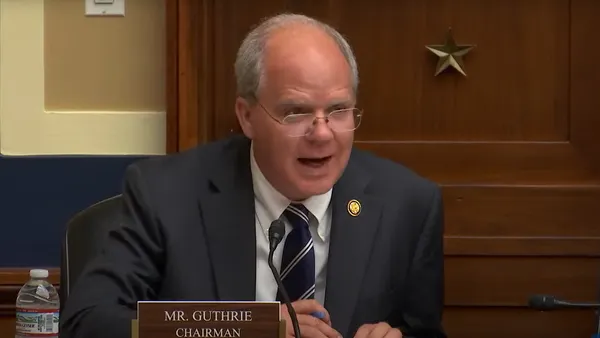Dive Brief:
- The Ohio Supreme Court on Tuesday struck down a 2017 ruling by the state's Public Utilities Commission (PUCO) that capped energy efficiency spending by FirstEnergy, but it is not clear if the decision will have immediate energy-saving impacts.
- PUCO capped FirstEnergy efficiency spending at 4% of revenues, but the utility appealed and argued that the spending cap was arbitrary and would keep it from meeting goals set by the state's legislature. The court sided with the utility, citing PUCO's "failure to adequately explain its decision."
- Despite the victory, efficiency advocates say the decision will have limited impact for now. In July, Ohio Gov. Mike DeWine, R, signed HB 6 which subsidizes two nuclear plants and two coal plants in the state and pays for it in part by slashing efficiency spending. The law eliminated Ohio's current energy efficiency resource standard after 2020.
Dive Insight:
Utility officials and efficiency advocates celebrated the decision, but until a new state law supporting nuclear and coal plants is altered or repealed, the court's remand will have little impact, according to analysts.
“From a legal perspective, this is an important ruling because it upholds the notion that the legislature has primacy in crafting energy policy; regulators can’t apply a cost cap where the statute does not expressly provide for one,” John Finnigan, lead counsel for Environmental Defense Fund’s (EDF) Energy Program, said in a statement.
But EDF went on to explain that the ruling "cannot technically do anything for the Ohioans or the environment" until HB 6 is overturned. The law created a customer-paid $1.1 billion subsidy for two nuclear power plants owned by FirstEnergy solutions, "which eviscerated Ohio’s energy efficiency programs," the group said. The bill also supports two coal plants owned by Ohio Valley Electric Corporation.
The bill essentially eliminated the state's energy efficiency programs to help pay for the subsidy, according to the Midwest Energy Efficiency Alliance. HB 6 blocked PUCO from authorizing a cost recovery mechanism for efficiency programs after the state's 17.5% energy savings target has been met in 2020.
The court's decision "alleviates concerns that a cap could restrict our ability to recover costs necessary to achieve mandated energy efficiency targets," FirstEnergy told Utility Dive in an email, adding that it was "pleased" with the ruling.
"While House Bill 6 is expected to eliminate the mandated energy efficiency programs post 2020, we will continue to ensure that any energy efficiency programs that we offer meet cost-effectiveness requirements established by the PUCO," FirstEnergy added.
The Ohio court found 5-2 in favor of the utility, pointing to the state's efficiency requirements.
"The error is clear and prejudicial. If the cost cap is understated, it results in less money for FirstEnergy to spend on programs to comply with statutory benchmarks," according to the decision. "For these reasons, this part of the commission’s order should be remanded for further proceeding."
The Ohio high court's decision could allow a significant expansion of utility energy efficiency programs, according to the Natural Resources Defense Council, but only if HB 6 is overturned.
“As we’ve said all along, it’s wrong to limit utility investments in energy efficiency programs that are essential for lowering carbon pollution and have created a thriving sector of Ohio’s economy," said Daniel Sawmiller, NRDC Ohio energy policy director.
A referendum campaign is underway to strike down the law, EDF said.
Not every stakeholder was pleased by the court's decision, however. The Ohio Consumers’ Counsel (OCC) supported PUCO's efficiency spending cap because it limited collections from FirstEnergy's 2 million customers.
“The Court’s ruling is a disappointment," OCC spokesman J.P. Blackwood told Utility Dive.













